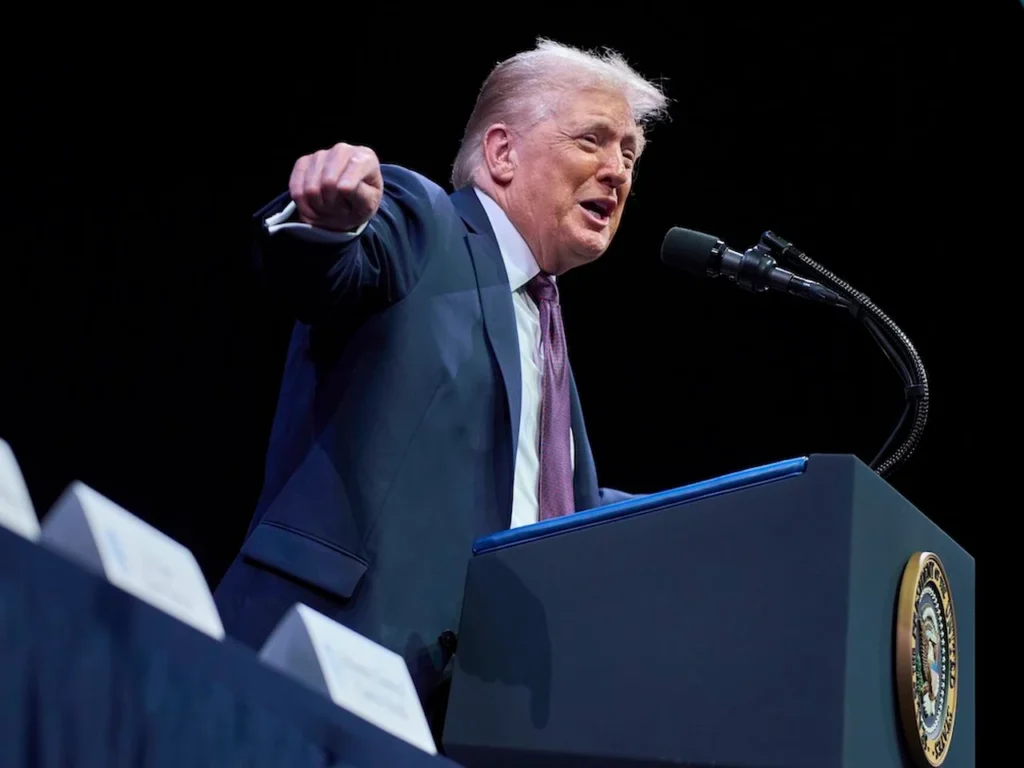Donald Trump has launched a global trade war without formal approval from Congress, raising tariffs sharply and threatening world markets. His administration claims broad authority under the International Emergency Economic Powers Act (IEEPA), citing a “national emergency” over trade imbalances. Critics argue this exceeds presidential power and may harm the U.S. economy.
In April, Trump cited “lack of reciprocity in trade, disparate tariff rates, and non-tariff barriers” as threats to U.S. security and the economy. Using IEEPA, he increased average tariffs from 1.5% to 19.4%, according to the Tax Foundation. These rates now rival those in some of the world’s poorest nations.
The U.S. Court of International Trade ruled in May that IEEPA does not grant the president unlimited authority to impose tariffs. The administration appealed, claiming tariffs are crucial for national prosperity. Trump has argued that high tariffs helped the U.S. economy in the late 19th and early 20th centuries.
Economists disagree. Over 2,000 experts have stated that free trade is linked to higher incomes, faster growth, and more efficient economies. The U.S. Court of Appeals recently upheld the lower court’s finding in a 7-4 decision. Judges wrote that IEEPA does not allow tariffs of the kind imposed and noted that past laws carefully defined presidential power over trade.
While the appeals court struck down the president’s authority, it left the tariffs in place temporarily, pending Supreme Court review. This leaves the U.S. operating under high tariffs that many economists consider damaging.
Experts expect the Supreme Court to limit Trump’s trade powers. IEEPA was enacted in 1977 to prevent excessive use of emergency powers, not to give presidents unrestricted control over trade policy. If the court rules against the administration, average U.S. tariffs could drop from 19.4% to roughly 6.3%, still above pre-trade-war levels but far more manageable.
High tariffs affect more than prices on goods. Free trade fuels prosperity, while barriers limit economic growth. The Fraser Institute shows that countries with low tariffs enjoy higher incomes. High-tariff nations, by contrast, tend to be poorer. For example, low-tariff countries have average per-capita GDPs of $43,502, while high-tariff nations average just $9,703.
Before the trade war, U.S. tariffs were comparable to Singapore, Hong Kong, and Australia. At 19.4%, the U.S. is now closer to countries like Zimbabwe, Egypt, and Tunisia. Higher tariffs also threaten U.S. rankings in trade freedom, moving the country from 56th to 76th place, and could drop overall economic freedom from fifth to 10th place. Economic freedom strongly correlates with national prosperity.
History shows that free markets and trade liberty boost human flourishing. Economist Deirdre McCloskey attributes centuries of improved living standards to economic liberalism and freedom. Restrictions like high tariffs limit opportunity, income, and overall wellbeing.
Trump’s tariff policies have disrupted global trade and strained partnerships. However, the courts may rein in presidential overreach. The Supreme Court’s decision will shape whether U.S. trade returns to more balanced, globally competitive levels, or continues under burdensome, third-world-style tariffs.


